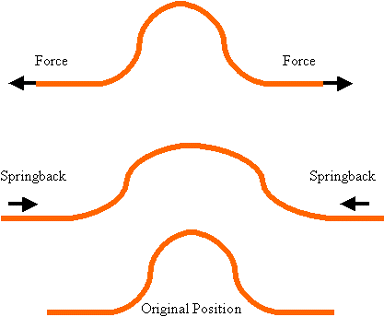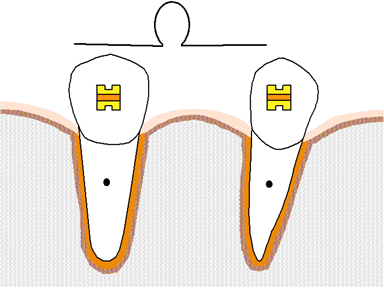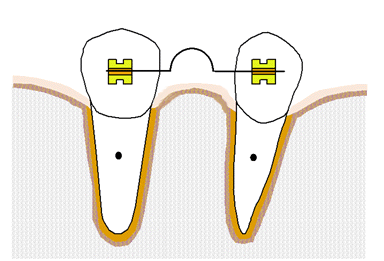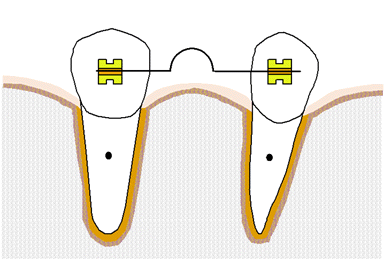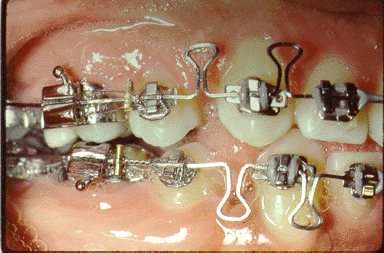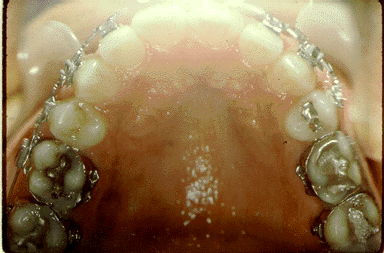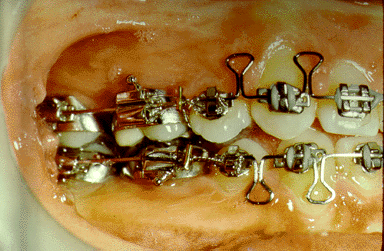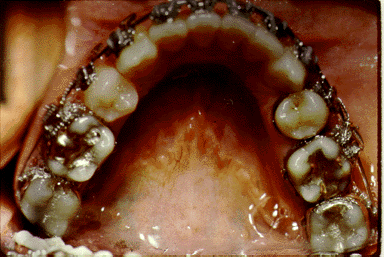

|
|
|
The fourth phase in orthodontic treatment is space closure. For patients that require the extraction of teeth to provide the space to align the teeth, an additional step is necessary. This step closes any gaps that remain between the teeth after all of the teeth are aligned, leveled, and have proper molar position. Space closure can be accomplished in many ways. One method is to use a wire formed into the shape of a loop. If a wire is bent out of its original position, the wire will tend to return to its original shape, provided the wire is not permanently deformed. For example, a straight wire will tend to springback to a straight position if it is deflected less than the proportional limit of the wire.
If a wire has a shape of a loop and is stretched, the wire will tend to return to the shape of a loop.
Orthodontists utilize a wire bent into the shape of loop to close space. If a loop-shaped wire were stretched to connect two teeth at each end, then a springback force would be created that would cause the two teeth to move together, thereby closing the space.
The process of space closure is accomplished by moving the teeth together to remove any gaps between the teeth. Space closure requires a wire with the following specification relative to correction of molar position:
higher strength Shape:
Would you prefer a round or a rectangular wire? Size:
Note: 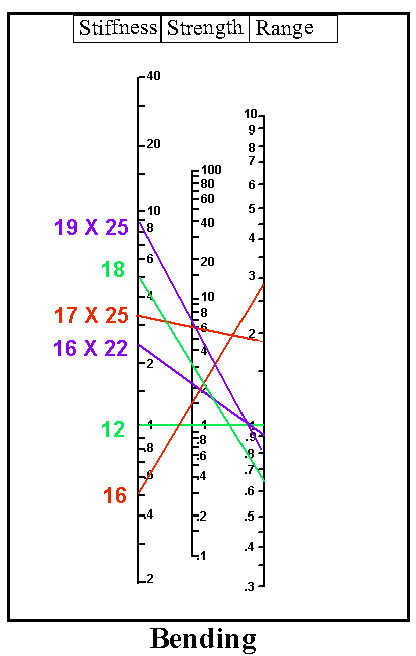

Which wire would work best for this phase? With the proper orthodontic technique, your patientŐs teeth will move to result in the following configuration:
Last Update: August13,1998 Please direct questions and comments about this page to appl@net.chem.unc.edu Designed in cooperation with The Shodor Education Foundation, Inc. © Copyright 1998 The University of North Carolina at Chapel Hill |

